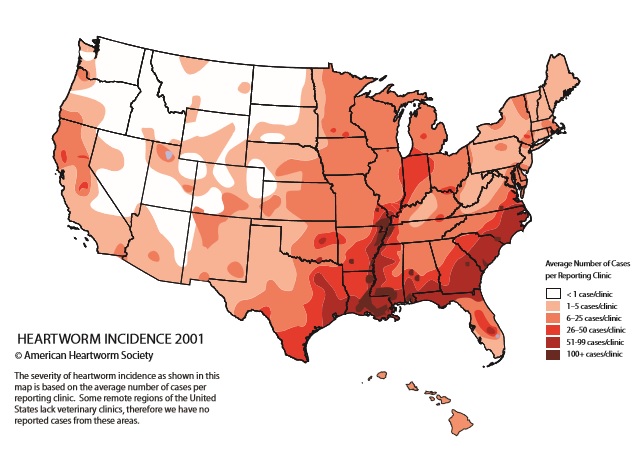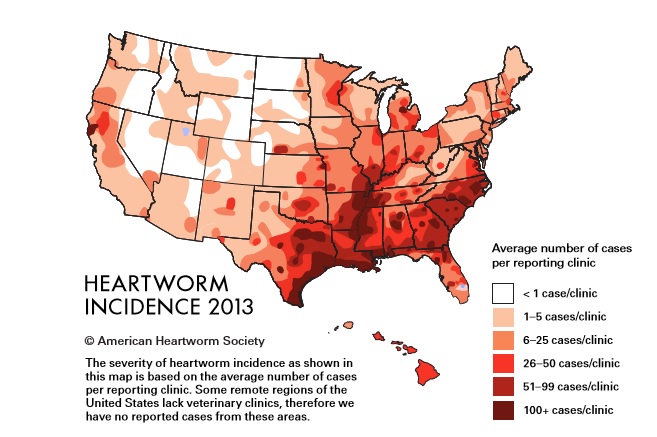The Hidden Way Climate Change Is Making Your Pet Sick
By:
The rise in temperatures caused by El Niño may be helping spread the Zika virus, as warmer temperatures can speed the life cycle of the mosquito responsible for the contagion, scientists said recently. But it turns out that humans may not be the only ones who need to worry about our changing climate and the greater risk of mosquito-borne diseases: Our pets could be at risk, too.
RELATED: Here Is Where the Zika Virus Has Hit
Climate change and heartworm?
Climate change may be helping spread the Zika virus faster than anticipated by providing favorable conditions to Aedes aegypti, the mosquito at the center of the outbreak. And shifting weather patterns could also be affecting mosquitoes that carry heartworm, which spreads from animal to animal through the bite of an infected mosquito.
Heartworm infections are diagnosed in some 250,000 dogs per year in the United States. And that number could be on the rise, thanks to stronger El Niño weather events that cause wetter weather, as well as rising global temperatures from climate change.
"On average, warmer and wetter conditions are expected to affect mosquito populations as you indicate: longer mosquito seasons, larger mosquito populations, and expansion of the geographic range of some mosquito species," University of California Riverside entomologist William Walton told ATTN:.
The effects depend on where you are, Walton added.
"The effects of El Niño are not equal in all geographic areas," Walton said. "Some areas are wetter, while others are drier than the long-term averages. More rain does not always equate to more mosquitoes of all species; some vector species are reduced during the wetter and slightly cooler conditions associated with rainy El Niño conditions in Southern California. Other important mosquito vectors increase with more standing water across the landscape."
Perhaps this is why in 2009 researchers in the United Kingdom began warning that heartworm was on the rise in England and Scotland, including more exotic varieties of large heartworm not previously seen in the country. Why? Warmer, wetter summers, according to scientists.
Data gathered by the American Heartworm Societyshow a similar trend for heartworm cases across the U.S. Looking at maps comparing the impact of the disease from 2001 to 2013, it's easy to see the disease's increased reach into regions that were previously less effected by heartworm, as well as its higher prevalence in the South.
 American Heartworm Society - heartwormsociety.org
American Heartworm Society - heartwormsociety.org
 American Heartworm Society - heartwormsociety.org
American Heartworm Society - heartwormsociety.org
The takeaway?
"I don't know why a person wouldn't give his dog heartworm pills once a month. That seems like a no-brainer," Gregory D. Ebel, professor and infectious disease specialist at Colorado State University's veterinary school, told the Daily Progress. And with a rise in cat heartworm cases, protecting your cat with a heartworm-inclusive flea medication year-round isn't such a bad idea either.
